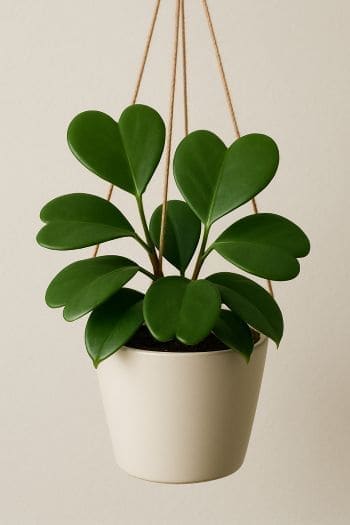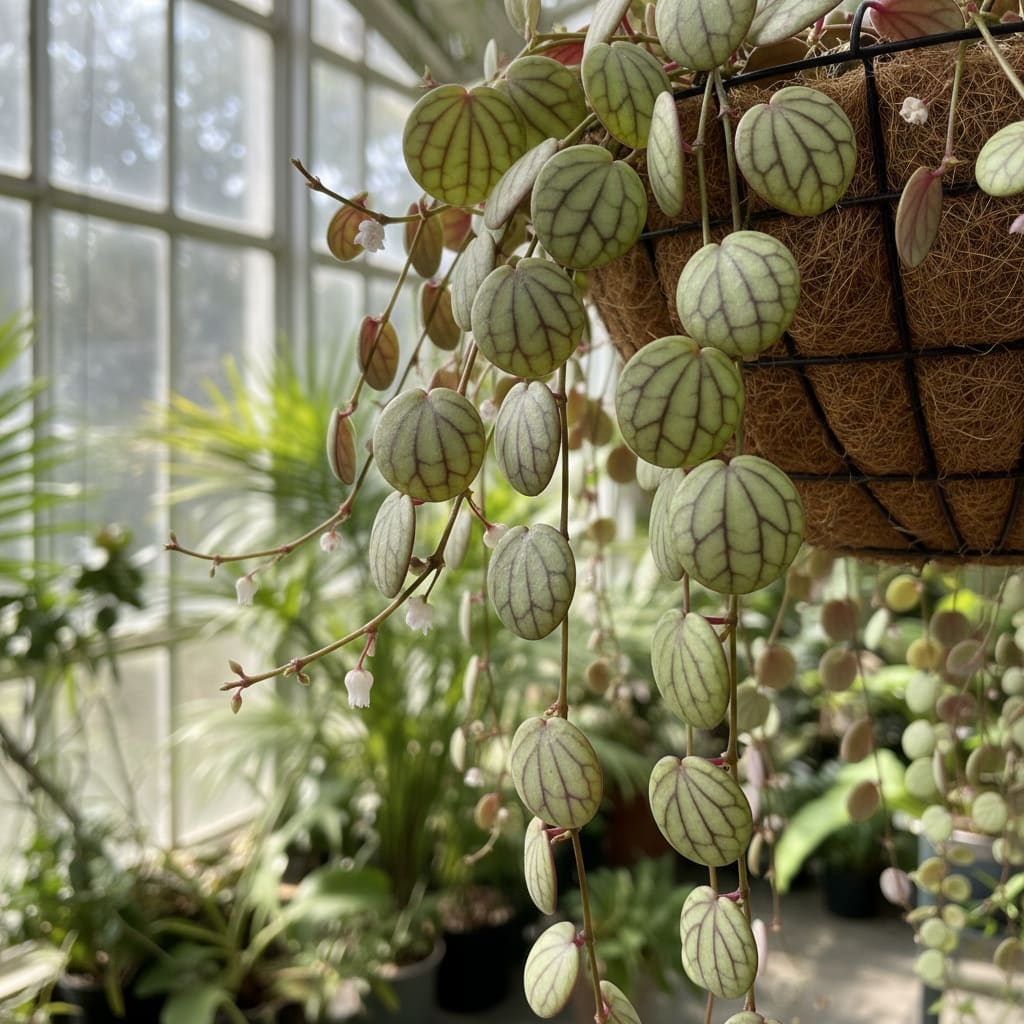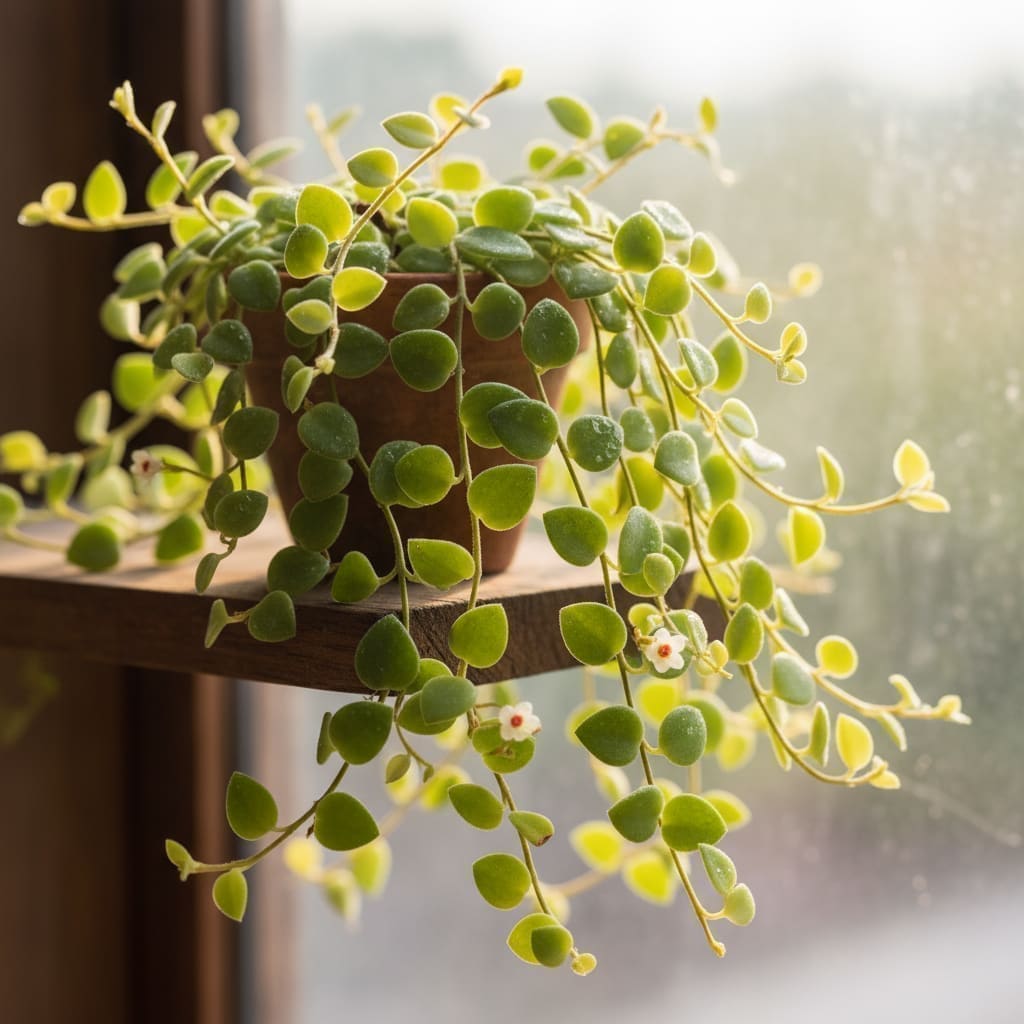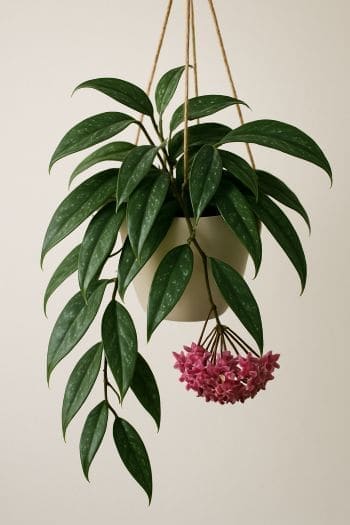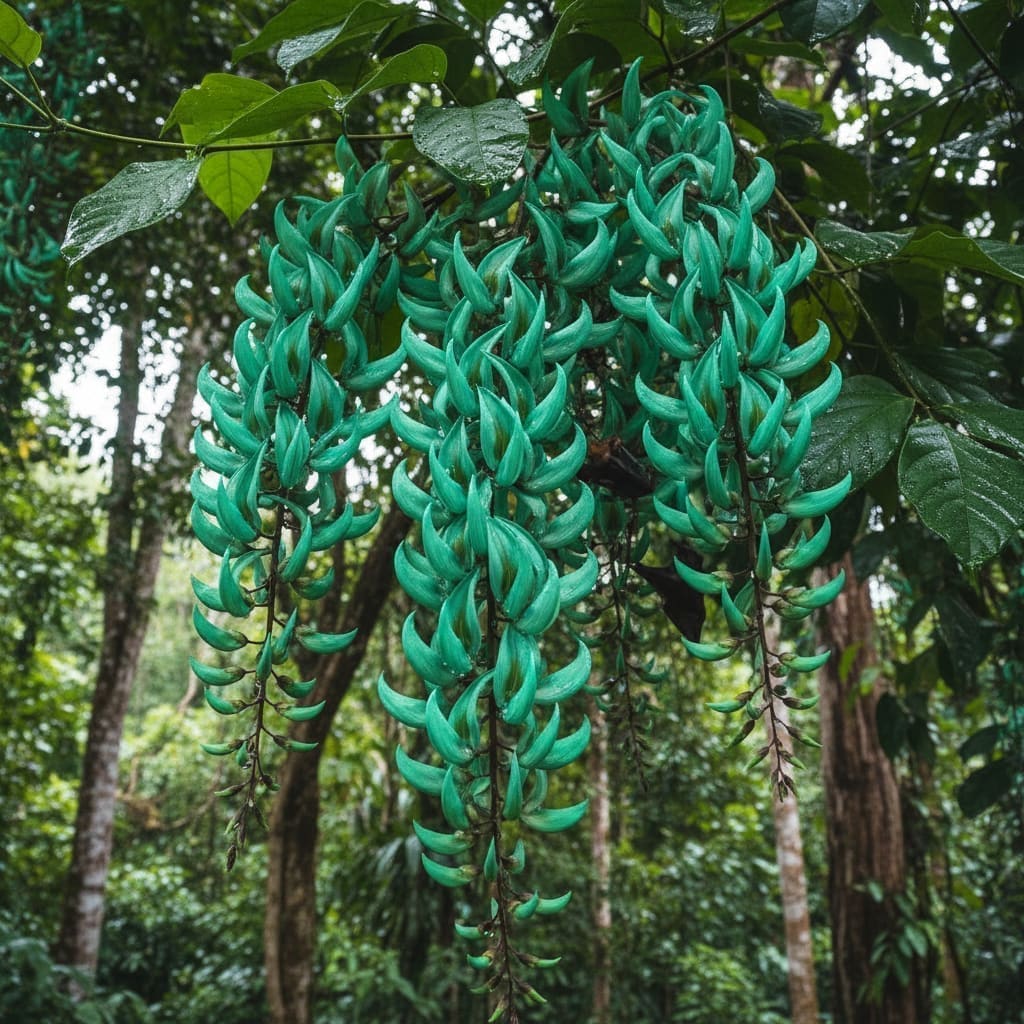Hoya wayetii Care & Growing Guide
Overview
Hoya wayetii is a trailing and sometimes climbing tropical plant native to the Philippines. Belonging to the Apocynaceae family, it is prized for its elongated, waxy leaves with dark margins and occasional silver “splash” variegation. This slow-to-moderate grower is popular among indoor plant enthusiasts for its ornamental foliage and clusters of star-shaped flowers under the right conditions. In its native habitat, it grows epiphytically, clinging to trees and drawing moisture from the humid air.
Identification & Growth Habit
Hoya wayetii features narrow, lance-shaped leaves averaging 3–5 inches long. The leaf edges often take on a darker, almost maroon hue, especially in brighter light. Some plants display silver speckles across the leaf surface, creating a unique “splash” effect. Stems are flexible and can trail gracefully from hanging baskets or be trained to climb supports. Mature plants may produce umbels of fragrant, waxy flowers in shades of pink to reddish-purple.
Light & Placement
Provide bright, indirect light for at least six hours daily. East- or west-facing windows with filtered light are ideal. Avoid harsh midday sun, which can scorch leaves, but ensure the plant is not in deep shade, as this can slow growth and reduce flowering potential. Indoors, you can supplement with a full-spectrum grow light if natural light is insufficient.
Watering & Humidity
Allow the soil to dry out almost completely between waterings. When watering, soak the soil thoroughly until excess drains from the bottom of the pot. Discard any standing water in saucers to prevent root rot. During the active growing season, you may need to water more frequently; in winter, reduce watering.
Hoya wayetii thrives in 60–80% humidity. In drier climates or during winter heating, use a humidifier, group plants together, or place the pot on a pebble tray with water (ensuring the pot base is above the waterline). Avoid placing the plant near heating or cooling vents that can cause rapid moisture loss.
Soil & Repotting
Use a well-draining, airy mix. A blend of peat moss, perlite, and orchid bark works well, or choose a commercial succulent or orchid mix. Repot only when the plant becomes root-bound, typically every 2–3 years, as Hoyas prefer slightly snug pots. Select a container with drainage holes to prevent waterlogging.
Fertilizing
During spring and summer, feed with a diluted, half-strength orchid fertilizer once or twice a month. Organic options like fish emulsion or used coffee grounds can be applied sparingly. Avoid over-fertilizing, which can lead to salt buildup and root damage. In autumn and winter, reduce or suspend feeding as growth slows.
Pruning & Training
Prune to control length, encourage branching, and remove any damaged foliage. Use clean, sharp scissors or pruners. For a climbing display, train stems onto a trellis, moss pole, or hoop. If growing in a hanging basket, allow stems to trail naturally. Avoid cutting peduncles (flower spurs), as Hoyas often rebloom from the same points.
Propagation
Step-by-Step Stem Cutting Method
- Select a healthy stem with at least two nodes and several leaves.
- Cut just below a node using sterilized scissors.
- Remove the lower leaves to expose the nodes.
- Place the cutting in water or a moist, well-draining potting mix.
- Maintain high humidity and bright, indirect light until roots develop (usually 4–6 weeks).
- Once rooted, transplant into a small pot with the appropriate soil mix.
Common Problems
Pests
- Mealybugs: White, cottony clusters on stems and leaves. Remove manually and treat with insecticidal soap or neem oil.
- Spider mites: Fine webbing and stippled leaves. Increase humidity and apply miticide or insecticidal soap.
- Scale insects: Brown, shell-like bumps. Scrape off gently and treat with horticultural oil.
Diseases
- Root rot: Caused by overwatering or poor drainage. Remove affected roots and repot in fresh, well-draining soil.
- Leaf spot: Often fungal; remove affected leaves and improve air circulation.
Toxicity & Pet Safety
Hoya wayetii is considered toxic if ingested by pets or humans. Keep it out of reach of cats, dogs, and small children. If accidental ingestion occurs, seek veterinary or medical advice promptly.
Styling & Decor Tips
Showcase Hoya wayetii in a hanging basket to highlight its trailing stems, or train it onto a decorative trellis for a vertical accent. Its narrow leaves and dark edges pair well with minimalist or modern interiors. Place it where its foliage can cascade freely without obstruction.
Varieties & Cultivars
While the standard green form is most common, some Hoya wayetii plants exhibit more pronounced silver splash variegation. These variations are often sought after by collectors. Leaf coloration can intensify under higher light conditions.
Buying Tips & Maturity
When purchasing, look for plants with firm, blemish-free leaves and no signs of pests. Younger plants may have shorter vines, while mature specimens will have longer, fuller growth and may be closer to blooming size. Flowering typically occurs on mature plants under optimal conditions.
Seasonal Care
- Spring/Summer: Active growth; maintain regular watering, higher humidity, and monthly feeding.
- Autumn: Gradually reduce feeding; monitor watering as growth slows.
- Winter: Provide bright light, reduce watering, and protect from cold drafts. Avoid repotting during dormancy.
FAQ
- How often should I water my Hoya wayetii? Water only when the soil is nearly dry, then soak thoroughly and drain excess.
- Will my Hoya wayetii flower indoors? Yes, with bright light, proper care, and maturity, it can produce clusters of star-shaped blooms.
- Can I grow Hoya wayetii outdoors? In warm, frost-free climates, it can be grown outdoors in shaded or filtered light areas.
- Why are the leaf edges turning brown? Possible causes include low humidity, underwatering, or excessive direct sun.
- Should I mist my Hoya wayetii? Occasional misting can help humidity but is less effective than using a humidifier or pebble tray.
Troubleshooting Scenarios
- No new growth in summer: Check light levels and feeding schedule; insufficient light or nutrients can stall growth.
- Wrinkled leaves despite watering: Roots may be compromised; inspect for rot or compacted soil preventing water uptake.
- Yellowing lower leaves: Often a sign of overwatering; allow soil to dry more between waterings and ensure pot has drainage.
- Bud drop before opening: Can be caused by sudden temperature changes or moving the plant during bud formation.
Advanced Pruning & Training
For fuller displays, pinch back vine tips during active growth to encourage lateral shoots. Use soft plant ties to secure stems in gentle curves along a support, creating a sculptural effect. Layering vines back into the soil surface of the same pot can root additional nodes, increasing density without separate propagation.
Companion Plant Suggestions
Pair Hoya wayetii with other humidity-loving, trailing species like Dischidia ovata or Peperomia prostrata for a textural contrast. Upright foliage plants such as Calathea lancifolia can provide a dramatic backdrop, while ferns can help maintain ambient humidity.
Do & Don't List
- Do: Rotate the plant periodically for even light exposure.
- Do: Use rainwater or distilled water if tap water is high in salts.
- Don't: Remove healthy peduncles after flowering; they can rebloom.
- Don't: Expose to prolonged temperatures below 50°F (10°C).
